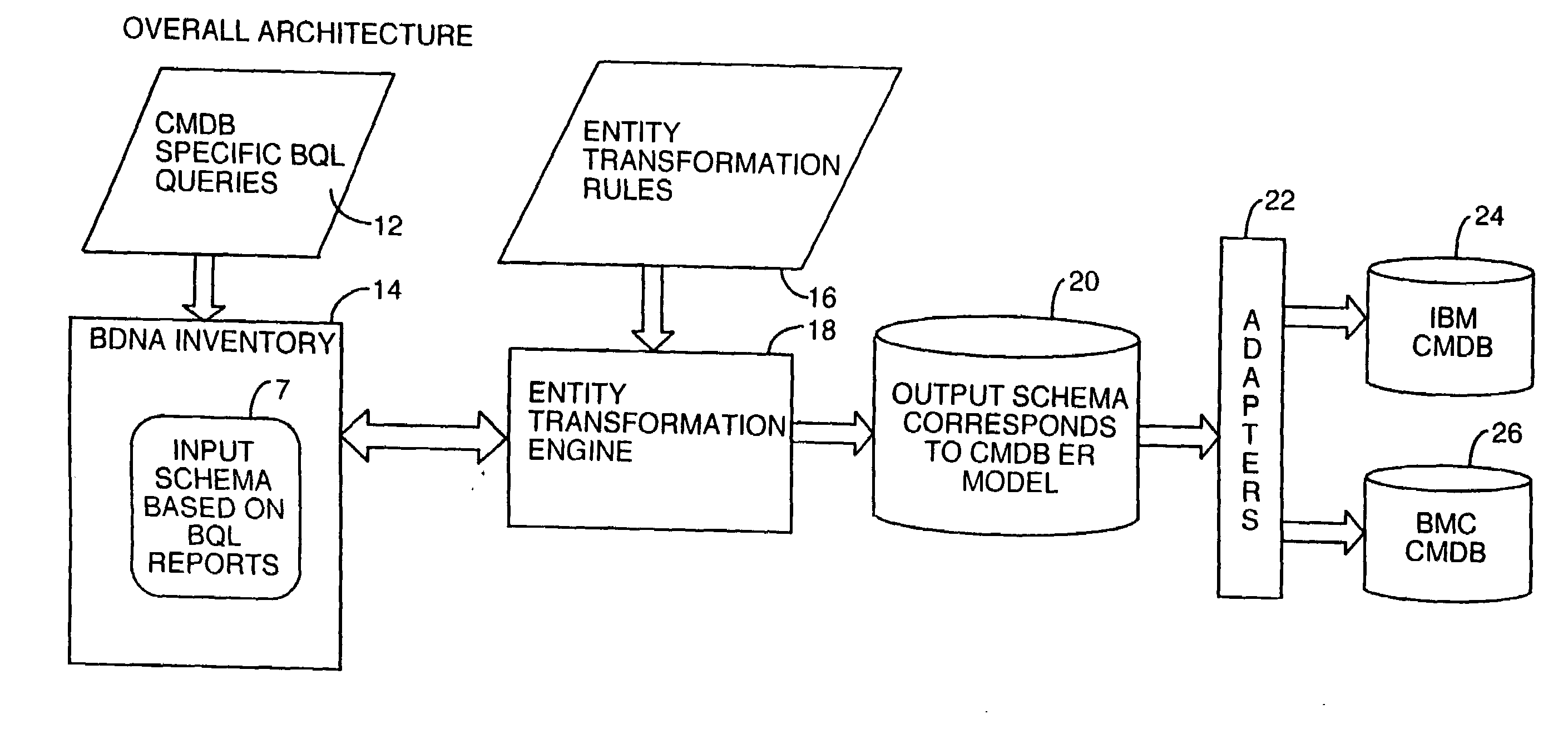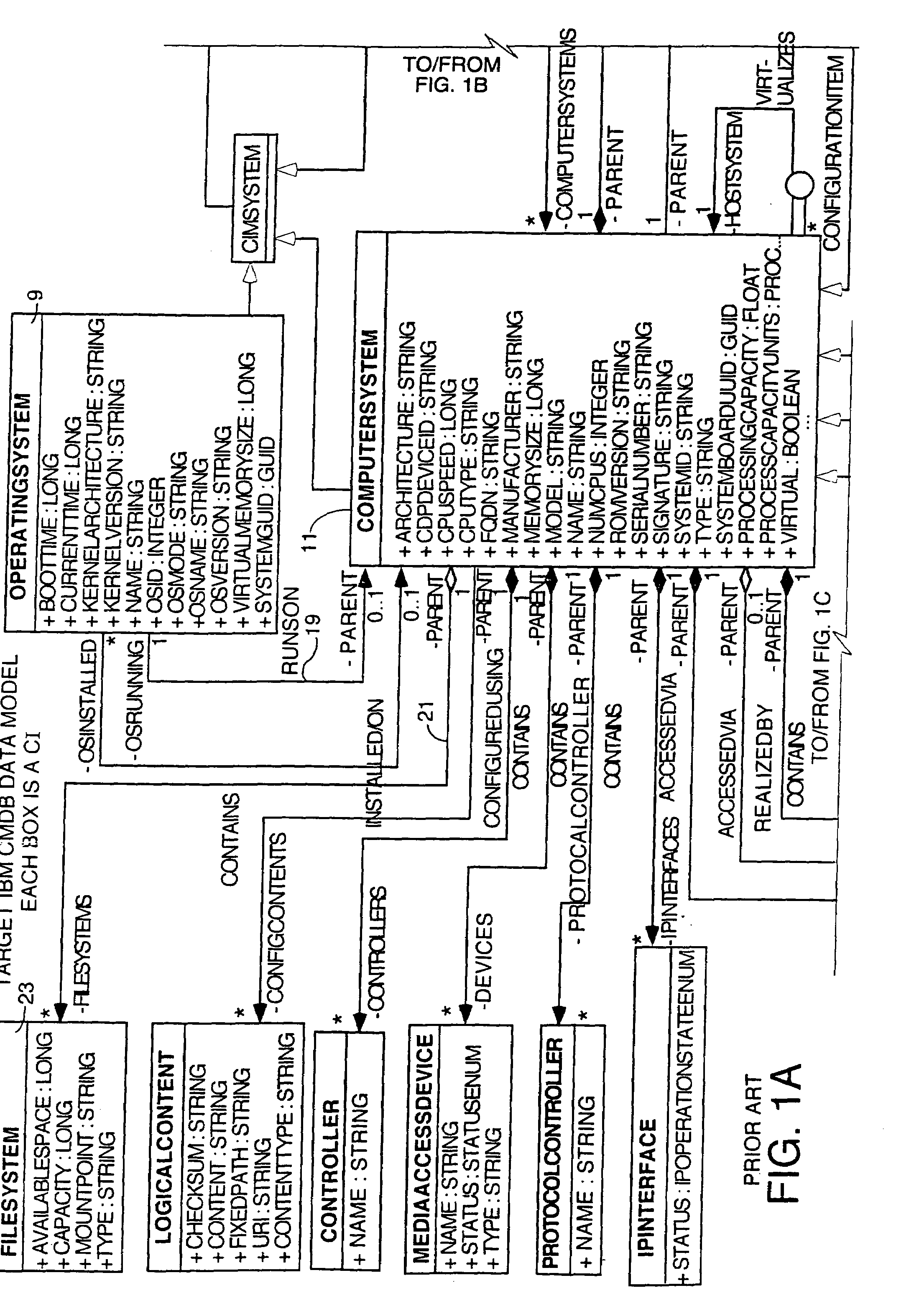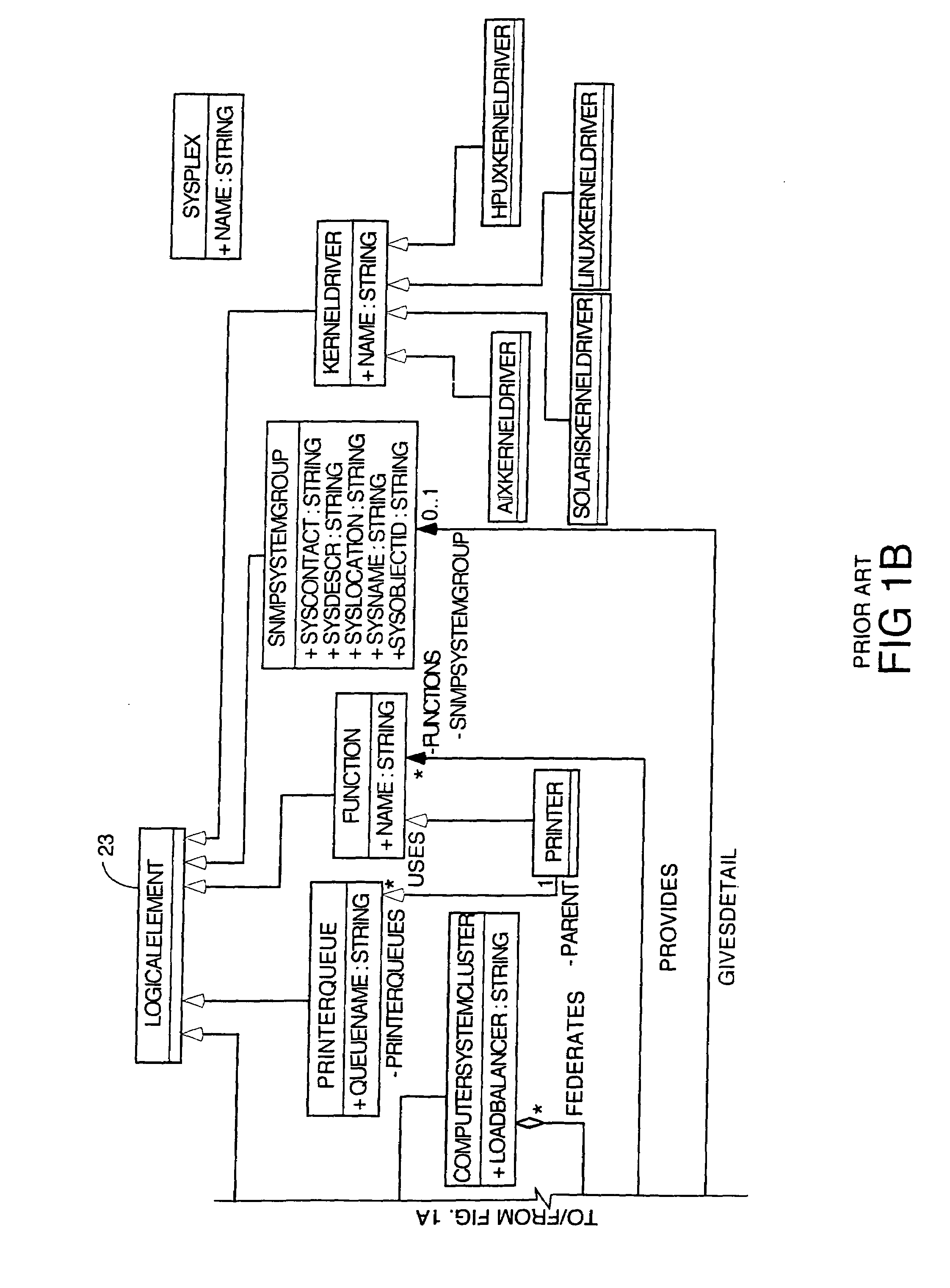External system integration into automated attribute discovery
an external system and attribute technology, applied in the field of external system integration into automated attribute discovery, can solve the problems of expensive and time-consuming manual collection of such data on a periodic basis, and it is difficult to know this for large companies and governmental entities
- Summary
- Abstract
- Description
- Claims
- Application Information
AI Technical Summary
Benefits of technology
Problems solved by technology
Method used
Image
Examples
Embodiment Construction
[0053]The process of exporting inventory attribute data developed by systems such as those marketed by BDNA (hereafter BDNA discovered data) into the data bases or data structures of other system fundamentally involves a mapping process to resolve differences between the data structure (data model) of the BDNA discovered data and the data structure or data model of a target system.
[0054]FIG. 1 is one page of a multipage data model diagram illustrating some of the Configuration Items in the IBM CMDB data model. This is a conceptual model only in the form of a class diagram and is not how the data is actually stored in their database. A CMDB is a common store where all the information about the IT assets of an entity are stored, and it has a data structure or data model which is independent of the data structure of discovery data discovered by discovery tools such as the BDNA discovery tool. A data model is a class diagram which defines the classes of objects, each object's attributes...
PUM
 Login to View More
Login to View More Abstract
Description
Claims
Application Information
 Login to View More
Login to View More - R&D
- Intellectual Property
- Life Sciences
- Materials
- Tech Scout
- Unparalleled Data Quality
- Higher Quality Content
- 60% Fewer Hallucinations
Browse by: Latest US Patents, China's latest patents, Technical Efficacy Thesaurus, Application Domain, Technology Topic, Popular Technical Reports.
© 2025 PatSnap. All rights reserved.Legal|Privacy policy|Modern Slavery Act Transparency Statement|Sitemap|About US| Contact US: help@patsnap.com



